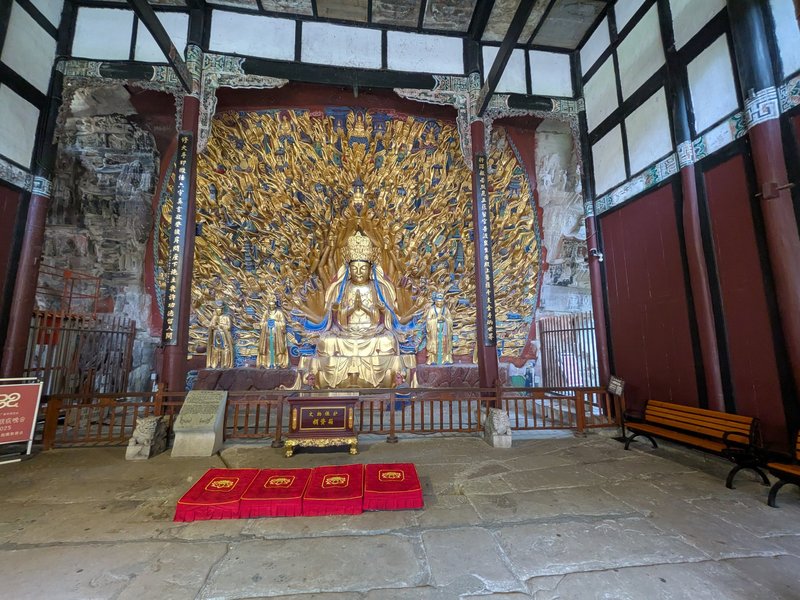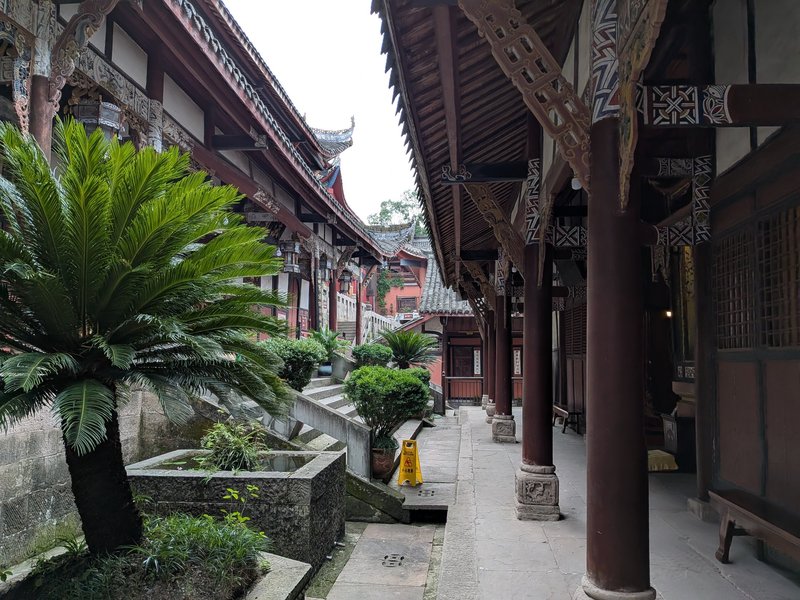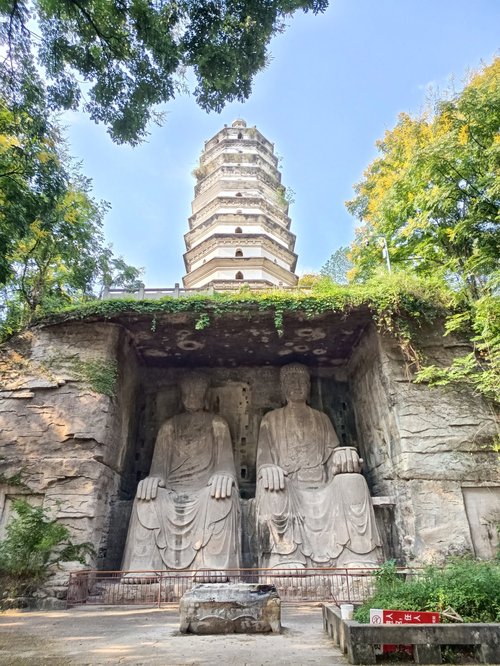On a day trip from Chengdu, we visited both Baodingshan and Beishan. We started our visit at Baodingshan. As it was our first full day in China, we still needed to groove in. We spent more than an hour trying to find the actual entry to the site. We made the beginner's mistake of relying on Google Maps which has a nasty offset (error) of 100 meters in China.
Eventually, we made our way to the Dazu Rock Carvings Museum, which is where the main visit path starts. The museum houses several pieces of Buddhist art and attempts to put the site in context with other rock carvings and grottoes across China. They also provide an extensive overview of preservation methods, highlighting that a key research question is the restoration and preservation of the original colours.

Baodingshan itself is truly great, featuring many rock carvings of different styles and sizes along the path. The Circle of Life is pretty spectacular, as is the big golden Buddha with 1,007 Hands. Here and there you still find flecks of colour, which allows you to imagine how magnificent the site would have looked in the past. Shengshou Monastery, which marks both the beginning and end of the visit, is spectacular in its own right.

After our visit, we took a Didi to Beishan. At Beishan we found a more sombre site. The main carvings are smaller and less narrative-driven. Not to be missed are the two giant Buddhas on a nearby hill, on top of which rises a white pagoda and lay the ruins of a former temple. The path for this starts near the main site’s exit, by the pond. It’s a bit of a hike upwards and very uneventful until you reach the top.

Both sites invoked memories of Christian sites in me. Beishan, with its halls, felt like a Stations of the Cross walk, and I felt reminded of the Sacri Monti. Baodingshan had a more narrative feel where individual scenes and stories were depicted, much like the very descriptive altar pieces you find in Christian medieval churches or in Latin America.
If you were to pick only one, the choice should be Baodingshan. While Baodingshan is certainly the more touristy of the two places, it is still an active site of worship and the rock art is more impressive. Beishan has more of a museum feel, with good panels explaining the key parts.
Getting There
First things first, I have updated the map and you should find all points mentioned in this review in the map.
The most straightforward option is to take a High Speed Train from either Chengdu Dong (East) or Chongqing to Dazu Nan (South). It’s a limited set of trains that stop in Dazu, so check the schedule in advance.
As is common in China, Dazu Nan is nowhere near the actual city of Dazu, which itself is not directly near Baodingshan. You must get a Didi from Dazu Nan to Shengshou Temple East Gate. Do not type Dazu or Baodingshan as this will not get you where you need to be. The cost should be below 150 RMB, and the travel time is a bit more than an hour.
At Shengshou Temple, you can either take a shuttle bus or walk up to the temple and from there follow the signs to the Dazu Rock Carvings Museum. I would agree with Els that the bus serves little purpose as the distance is rather short. Near the Museum is also the entry to the main components of the site (one way), and the path will take you in a circle back to Shengshou Temple.
Really important: You cannot navigate with Google Maps as the inherent offset really has you going the wrong way. And the signposting in Baodingshan is a bit confusing. Just head for the rock carvings museum.
Beishan is closer to Dazu. We grabbed a Didi from Baodingshan to get to Beishan; the cost was below 50 Yuan. There is also a public bus connection, but why? You can get a combined ticket for Baodingshan and Beishan, but check the last entry times for each site as they close entry earlier than they close the site.
From Beishan we went back to Dazu Nan by Didi and returned to Chengdu the same day. We spent roughly seven hours visiting both sites and had a to wait 45 minutes for our return train. You can probably do only Baodingshan in five hours, but you need to be very exact in your time management.
More on
Comments
No comments yet.
